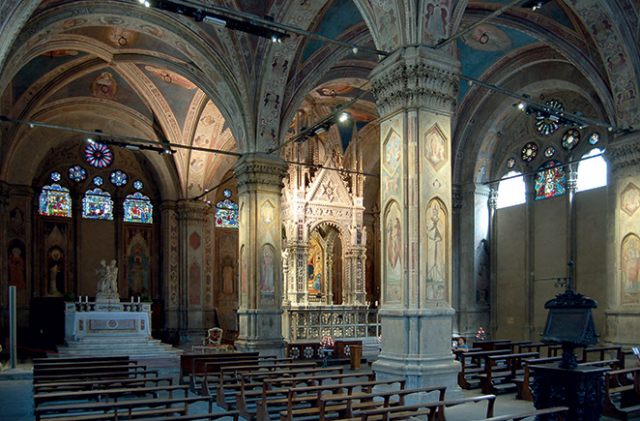Secular acts and sacred practices in the Italian Renaissance church interior
Historian article

Joanne Allen reveals a fundamental structural and architectural development in Italian churches in the Renaissance era, demonstrating that careful observation of structures and archives can substantially inform our appreciation of all church buildings.
In the opening to The Decameron (c. 1350), Boccaccio described how the ten young people who would become storytellers in his book met in a Florentine church during the height of the Black Death:
“it chanced [...] that there foregathered in the venerable church of Santa Maria Novella, one Tuesday morning when there was well-nigh none else there, seven young ladies […] who had heard divine service in mourning attire... […] there entered the church three young men [...] and they went seeking […] to see their mistresses, who, as it chanced, were all three among the seven aforesaid.”
Boccaccio’s description of young people meeting their friends to plan an escape from the plague-ridden city reminds us of a significant aspect of churches in the early modern period: their use for non-liturgical activities. As a venue for covert assignations, legal meetings, and even social events, the church interior witnessed more than mere religious rite.
This resource is FREE for Historian HA Members.
Non HA Members can get instant access for £2.49

